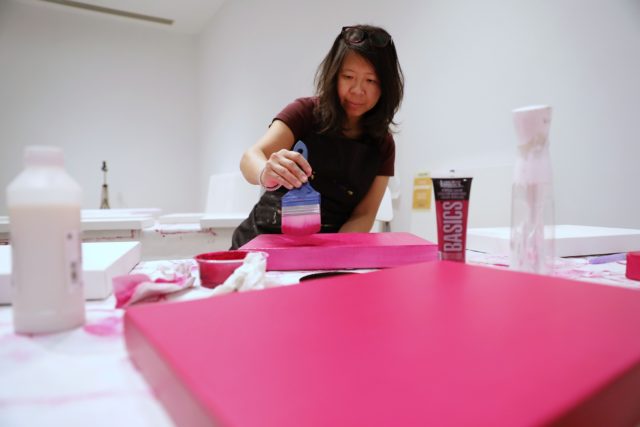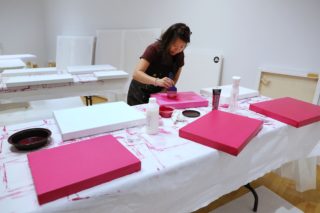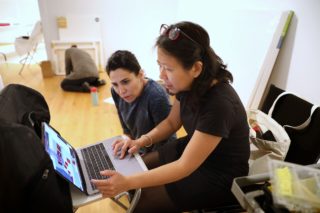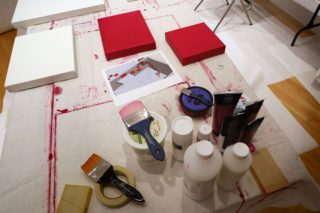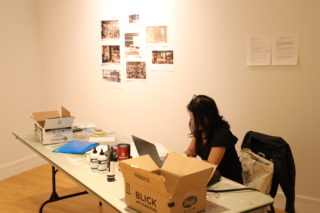After introducing you to our first two resident artists, Jagath Weerasinghe and Yong Soon Min, it is time to finish our artist spotlight series with the final member of the Baik Artist Residency, Tintin Wulia. Once again, the Baik Artist Residency is occuring in the Van Every/Smith Gallery through the month of October, with the exhibition on view from October 29th and December 11th. Please go into the studio space and see what each resident artist is creating for the project!
Tintin Wulia was born in Bali, Indonesia, and is now based in Brisbane, Australia and Gothenburg, Sweden. After studying engineering in Indonesia and receiving a BA from Berklee School of Music in Film Scoring, she finally pursued her PhD in art from RMIT University in Australia. Further, she is currently a postdoctoral fellow in design, crafts, and society with a focus on migration at the University of Gothenburg until 2020. As you can tell, one of Wulia’s strong suits is transcending borders, which is fitting for the current Baik Residency.
This blurring of boundaries between countries and disciplines gives her work an important context of change, flux, and human interaction. Particularly, Wulia uses conceptual work, large installation pieces, and mixed contemporary media and technology in order to foster an important dialogue about globalization, human and non-human agency. Her materials vary from traditional canvases on which she paints to the utilization of Ikea furniture and other everyday objects. In this, she constantly subverts expectations and yet still manages to make her art both intentionally political and intimately personal.
Wulia’s work here at Davidson is a perfect example of this balance, for she blends her personal and familial life with political realities and historical patterns, specifically in her home country of Indonesia. Though I don’t wish to spoil what her final work will embody, Wulia says the following on her project to be realized at Davidson: “this project partly develops from looking at 1965 as Thing-in-common, a concept I synthesize through my practice, where an artwork acts as a meeting point – some kind of boundary object, but a more active/affective one that triggers connection between different agents.” In a sense, Wulia is reflecting on history in order to create contemporary borders and political conflict evident in the context of an art gallery.
Though you can see her work exhibited in collections throughout the world, including in Turkey, Japan, Indonesia, and Russia, make sure to come to the exhibition opening later this month where she exhibits along with Jagath Weerasinghe and Yong Soon Min in our very own Van Every/Smith gallery!

